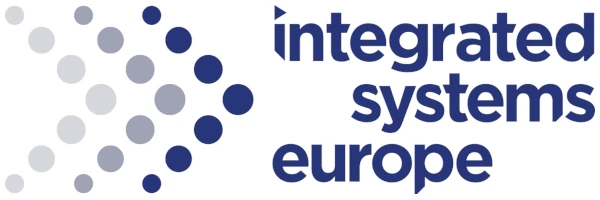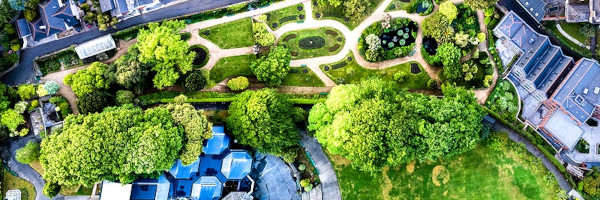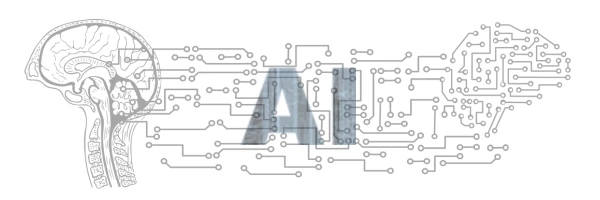Main Page: Difference between revisions
Jump to navigation
Jump to search
No edit summary |
No edit summary |
||
| (104 intermediate revisions by 2 users not shown) | |||
| Line 1: | Line 1: | ||
{{DISPLAYTITLE:<span style="position: absolute; clip: rect(1px 1px 1px 1px); clip: rect(1px, 1px, 1px, 1px);">{{FULLPAGENAME}}</span>}} | |||
{|style="width: 100%;" | |||
|- | |||
|colspan="3"|<div class="banner"; style="padding: 5px 20px 5x 20px; background-color: #e0e0e0;"> <p style="font-family:Arial; font-size: 20pt; "> <b>Purpose</b></p> </div> | |||
|- | |||
|style="padding: 20px"|<p style="font-family:Arial; font-size: 12pt; ">This knowledge base for municipal technology projects serves as a central repository for information, best practices, and lessons learned from previous projects. Its purpose is to improve the efficiency and effectiveness of technology implementation within a municipality by reducing the time and resources spent on repetitive tasks, promoting collaboration and knowledge sharing, and reducing the risk of project failures.</p> | |||
| | |||
|[[File:knowledge.jpg|link=Introduction]] | |||
|- | |||
|colspan="3"|<div class="banner"; style="padding: 5px 20px 5px 20px; background-color: #e0e0e0;"> <p style="font-family:Arial; font-size: 20pt; "> <b>Spotlight on Green Horizons Initiative</b></p> </div> | |||
|- | |||
|width=48%| [[File:ZeroCarbonUrban Design.jpg|link=Green_Horizons]] | |||
|width=4%| | |||
|The Green Horizons Initiative is a multifaceted effort to foster economic vitality, environmental sustainability, and community resilience in the Urban Flood Safety & Water Quality District (UFSWQD) communities of North Portland. It encompasses projects like the Workforce Development and Vehicle Electrification Center, which aims to create jobs in emerging technologies, transition to a greener economy, and enhance community infrastructure, and the Community Engagement and Resilience Program, which focuses on empowering under-resourced neighborhoods through education, capacity-building, and strategic investments. | |||
|- <!-- | |||
|- | |||
|colspan="3"|[[Whole_Community_Preparedness_for_Smart,_Connected_Cities|<div class="banner"; style="padding: 5px 20px 5px 20px; background-color: #e0e0e0;"> <p style="font-family:Arial; font-size: 20pt; "> <b>Whole Community Preparedness for Smart, Connected Cities</b></p> </div>]] | |||
|- | |||
|width=48%| [[File:SAWorkshop.jpg|link=Whole Community Preparedness for Smart, Connected Cities]] | |||
|width=4%| | |||
|[[Whole_Community_Preparedness_for_Smart,_Connected_Cities|Help shape the future of disaster response and recovery! This interactive workshop, led by the National Institute of Standards and Technology (NIST), the team explored innovative technology applications and strategies to improve public safety planning and community resilience in smart cities and communities.]] | |||
|- --> | |||
|colspan="3"|<div class="banner"; style="padding: 5px 20px 5px 20px; background-color: #e0e0e0;"> <p style="font-family:Arial; font-size: 20pt; "> <b>Events and Reports</b></p> </div> | |||
|} | |||
<div id="audiences" class="mainpage_row"> | |||
<div class="mainpage_box"> | |||
<div id="mainpage-events" title=" Events" class="items"> | |||
{{#ask: | |||
[[Category:Event]] | |||
[[Has end date::>{{CURRENTYEAR}}/{{CURRENTMONTH}}/{{CURRENTDAY}}]] | |||
|sort=Has start date | |||
|order=ascending | |||
|limit=1 | |||
|?= | |||
|?Has image#=2 | |||
|?Has website#=3 | |||
|format=plainlist | |||
|named args=yes | |||
|template=Single image | |||
|searchlabel= | |||
}} | |||
'''EVENTS''' | |||
{{#ask: | |||
[[Category:Event]] | |||
[[Has end date::>{{CURRENTYEAR}}/{{CURRENTMONTH}}/{{CURRENTDAY}}]] | |||
|sort=Has start date | |||
|order=ascending | |||
|limit=5 | |||
|?=# | |||
|?Has website#=2 | |||
|?Has start date#-F[d-M-y]=3 | |||
|format=plainlist | |||
|named args=yes | |||
|introtemplate=Show link Header | |||
|template=Show link date | |||
|outrotemplate=Show link Footer | |||
|searchlabel= | |||
}} | |||
[[Events|...further results]] | |||
</div> | |||
</div> | |||
<div class="mainpage_box"> | |||
<div id="mainpage-news" title=" Reports" class="items"> | |||
[[File:Artificial Intelligence Strategic Plan Fiscal Years 2025-2027x600.webp|center|100%|link=Ai-strategic-plan-09-20-2024.pdf]] | |||
'''REPORTS''' | |||
{|style="width: 100%;" | |||
|- | |||
{{#ask: | |||
[[Category:Paper]] | |||
[[Has doc type::report]] | |||
|sort=Has date published | |||
|order=descending | |||
|limit=5 | |||
|?=# | |||
|?Has pdf#=2 | |||
|?Has date published#-F[d-M-y]=3 | |||
|?Has URL=4 | |||
|format=plainlist | |||
|named args=yes | |||
<!--|introtemplate=Show link Header | |||
-->|template=Show pdf | |||
|outrotemplate=Show link Footer | |||
|searchlabel= | |||
}} | |||
[[Reports|...further results]] | |||
</div> | |||
</div> | |||
<!-- <div class="mainpage_box"> | |||
<div id="mainpage-news" title=" News" class="items"> | |||
{{#ask: | |||
[[Category:News]] | |||
[[Is displayed::true]] | |||
|sort=Has date published | |||
|order=descending | |||
|limit=1 | |||
|?= | |||
|?Has image#=2 | |||
|?Has pdf#=3 | |||
|format=plainlist | |||
|named args=yes | |||
|template=Single image pdf | |||
|searchlabel= | |||
}} | |||
'''NEWS''' | |||
{{#ask: | |||
[[Category:News]] | |||
[[Is displayed::true]] | |||
|sort=Has date published | |||
|order=descending | |||
|limit=5 | |||
|?=# | |||
|?Has pdf#=2 | |||
|?Has date published#-F[d-M-y]=3 | |||
|?Has URL=4 | |||
|format=plainlist | |||
|named args=yes | |||
|introtemplate=Show link Header | |||
|template=Show pdf | |||
|outrotemplate=Show link Footer | |||
|searchlabel= | |||
}} | |||
[[News|...further results]] | |||
</div> | |||
</div> | |||
<div class="mainpage_box"> | |||
<div id="mainpage-project" title=" Project" class="items"> | |||
{{#ask: | |||
[[Category:Project]] | |||
|sort=In municipality | |||
|order=random | |||
|limit=1 | |||
|?=# | |||
|?Has image#=2 | |||
|format=plainlist | |||
|named args=yes | |||
|template=Single image inside | |||
|searchlabel= | |||
}}</br>{{#ask: | |||
[[Category:Project]] | |||
|sort=In municipality | |||
|order=random | |||
|limit=4 | |||
|?= | |||
|format=plainlist | |||
|named args=yes | |||
|introtemplate=Show link Header | |||
|template=Line break | |||
|outrotemplate=Show link Footer | |||
|searchlabel= | |||
}} | |||
[[Projects|...further results]] | |||
</div> | |||
</div> --> | |||
</div> | |||
<!--There are significant benefits to be gained when communities use data to engage citizens, deliver services, and share resources. Civically minded [[:Category:Company|'''Organizations''']] including governments, commercial partners, university researchers and NGOs around the world are working together to deliver these benefits. OpenCommons provides a platform for this collaboration. | |||
[[File:IA_Smarter-Cities.png|center|Circular Economy provided by the Ellen MacArthur Foundation]] | To support collaboration we provide [[Webinars|'''webinars''']], a [[:Category:ActionCluster|'''catalog of projects''']], along with [https://github.com/OpenCommons '''open source code and standards''']. Through these mechanisms we hope to offer communities an alternative to custom systems that are not interoperable, portable between communities, extensible, or cost-effective. | ||
The objective of OpenCommons is to bring together governments, commercial partners, university researchers and NGOs to remove the technical barriers to broad deployment of socially beneficial data services. For an understanding of the outcomes we are striving to achieve see the work of the [[Ellen MacArthur Foundation|'''Ellen MacArthur Foundation''']] exploring the circular economy and [https://www.kateraworth.com/ '''Kate Raworth'''] balancing essential human needs and planetary boundaries. Please [[join|'''Join''']] us in this effort. | |||
[[File:IA_Smarter-Cities.png|link=https://ellenmacarthurfoundation.org/|center|Circular Economy provided by the Ellen MacArthur Foundation]] | |||
;'''OpenCommons Groups''' | ;'''OpenCommons Groups''' | ||
* | *[https://hihat.opencommons.org/Main_Page '''HiHAT Group''']: Advances distributed computing including high performance, edge and fog computing. | ||
*The Cirrus Group: Advances smart city technologies in buildings, transportation, utilities, and much more. | *[https://thecirrusgroup.co '''The Cirrus Group''']: Advances smart city technologies in buildings, transportation, utilities, and much more. | ||
*Urban Platform Group: Advances data interoperability, code portable between solutions, and system extensibility. | *Urban Platform Group: Advances data interoperability, code portable between solutions, and system extensibility. | ||
<div class="banner"; style="padding: 10px 20px 30px 20px; background-color: #e0e0e0;"> <p style="font-family:Arial; font-size: 14pt; "> <i>This community built website represents the work of {{#ask: [[Category:Person]] |format=count }} members in {{#ask: [[Category:Organization]] |format=count }} organizations working on {{#ask: [[Category:Activity]] |format=count }} projects in {{#ask: [[Category:Municipality]] |format=count }} municipalities.</i></p> <div class="banner"; style="padding: 0px; width: 320px; height: 40px; margin: auto; border-radius: 10px; background-color: #0000FF;"> <p style="font-family:Arial; font-size: 20pt; font-weight: 600;"> [[Special:RequestAccount|<span style="color:white">BECOME AN AUTHOR</span>]] </p></div> </div>--> | |||
<div class="banner"; style="padding: 10px 20px 30px 20px; background-color: #e0e0e0;"> <p style="font-family:Arial; font-size: 14pt; "> <i>This community built website represents the work of {{#ask: [[Category:Person]] |format=count }} members in {{#ask: [[Category:Organization]] |format=count }} organizations working on {{#ask: [[Category:Activity]] |format=count }} projects in {{#ask: [[Category:Municipality]] |format=count }} municipalities.</i></p> | |||
<span style="padding: 0px 20px 15px 20px; border-radius: 10px; background-color: #0000FF;"> <span style="font-family:Arial; font-size: 20pt; font-weight: 600;"> [[Special:RequestAccount|<span style="color:white">BECOME AN AUTHOR</span>]] </span> </span> <span style="padding: 0px 20px 15px 20px; font-family:Arial; font-size: 20pt; font-weight: 600;"> and/or </span> <span style="padding: 0px 20px 15px 20px; border-radius: 10px; background-color: #0000FF;"> <span style="font-family:Arial; font-size: 20pt; font-weight: 600; color:white;"> <span class="plainlinks">[https://buy.stripe.com/4gw8zH1dseXf4bC8wM <span style="color:white">A DONOR</span>]</span> </span> </span> </span> </div> | |||
=Premium Sponsors= | |||
{{#ask: | |||
[[Category:Organization]] | |||
[[Is sponsor::Premium Sponsor]] | |||
|?=# | |||
|?Has logo#=2 | |||
|?Has homepage#=3 | |||
|format=plainlist | |||
|named args=yes | |||
|template=Linkedimage | |||
}} | |||
<div style="clear:both;"></div> | |||
=Sponsors= | |||
{{#ask: | |||
[[Category:Organization]] | |||
[[Is sponsor::Sponsor]] | |||
|?=# | |||
|?Has logo#=2 | |||
|?Has homepage#=3 | |||
|format=plainlist | |||
|named args=yes | |||
|template=Linkedimage | |||
}} | |||
<div style="clear:both;"></div> | |||
<!--<div class="banner"; style="padding: 10px 20px 10px 20px; background-color: #e0e0e0;"> <p style="font-family:Arial; font-size: 14pt; "> Become a Sponsor and Active Member of OpenCommons[[File:JOIN.png|200px|center|link=membership]] <i></p> </div>--> | |||
<div class="banner"; style="padding: 10px 20px 30px 20px; background-color: #e0e0e0;"> <p style="font-family:Arial; font-size: 14pt; "> <i>OpenCommons is the premier site for community technology best practices with in excess of 8000 users.</i></p> <div class="banner"; style="padding: 0px; width: 320px; height: 40px; margin: auto; border-radius: 10px; background-color: #0000FF;"> <p style="font-family:Arial; font-size: 20pt; font-weight: 600;"> [[membership|<span style="color:white">BECOME A SPONSOR</span>]] </p></div> </div> | |||
Latest revision as of 05:17, November 30, 2025

EVENTS
| ISE 2026 | 03-Feb-26 |
| IT-TRANS 2026 | 03-Mar-26 |
| Smart Cities Connect Conference & Expo 2026 | 10-Mar-26 |
| Intertraffic Amsterdam 2026 | 10-Mar-26 |
| Smart City Summit & Expo 2026 | 17-Mar-26 |
Premium Sponsors
 |
 |
 |
 |
Sponsors
 |
 |
 |
 |
 |
 |
 |
 |
 |
 |
 |
 |











